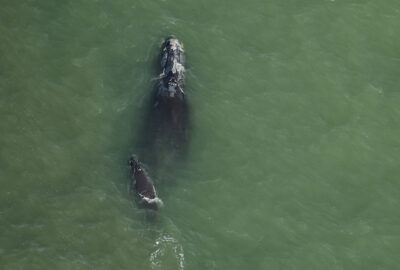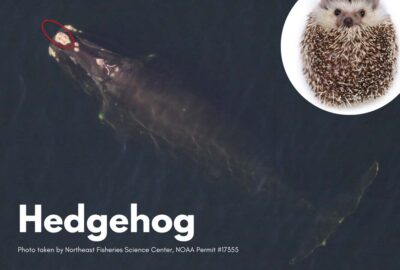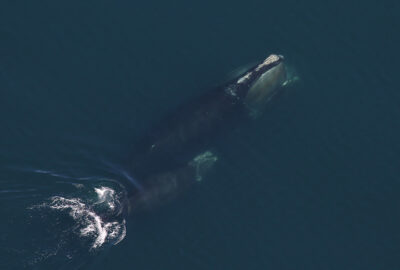Right Whale Consortium Releases 2020 Report Card Update
356 whales.That’s all scientists believe remains of the iconic North Atlantic right whales.
By New England Aquarium on Monday, November 09, 2020

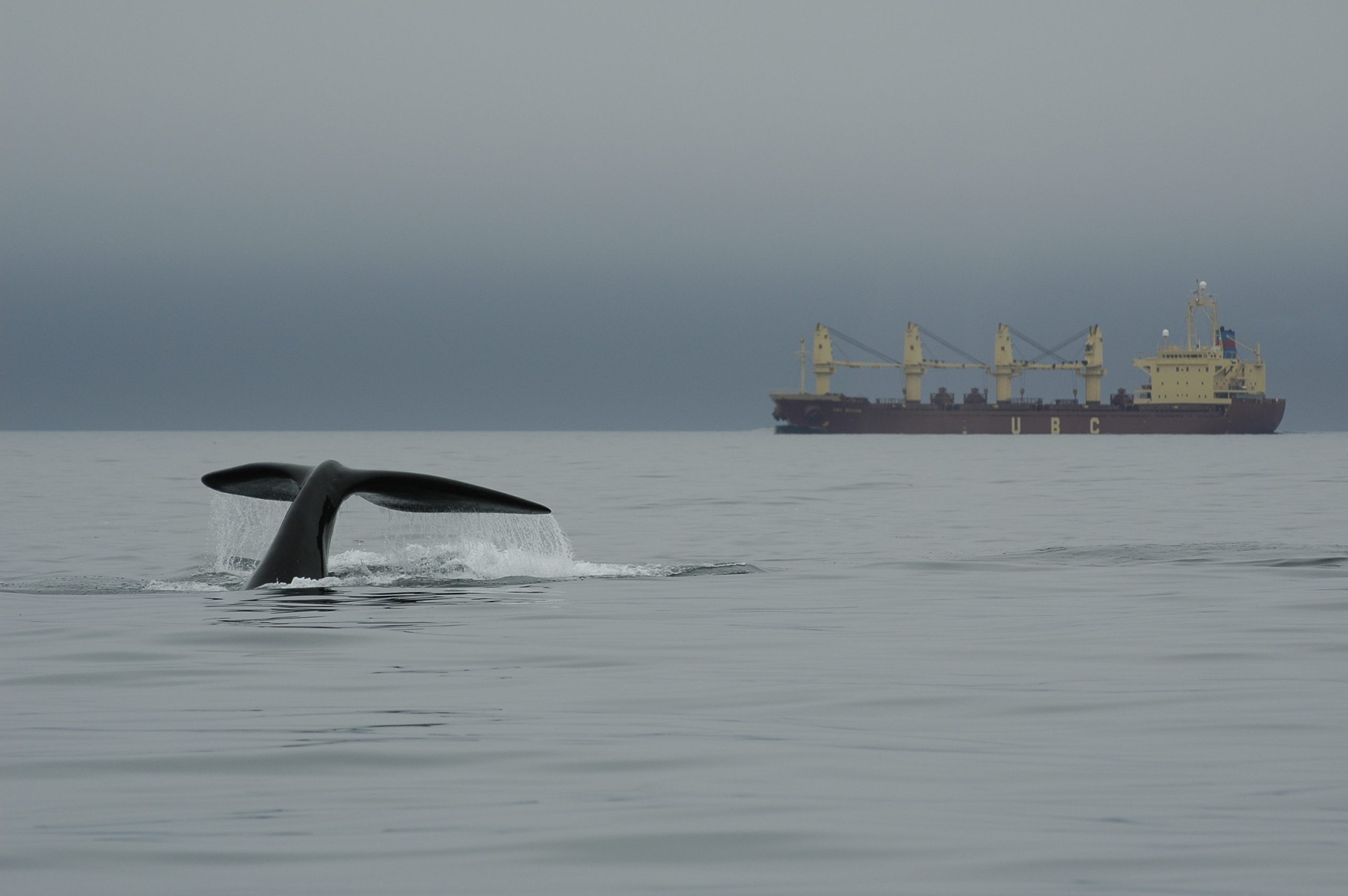
By Emily Greenhalgh
Named because they were once considered “the right whales to hunt” because they swam close to shore, produced high yields of whale oil and baleen, and—thanks to their thick blubber—floated when killed. The species may not be hunted anymore, but the threats it faces from humans are no less keen. Entanglement in fishing gear, vessel strikes, and the shifting distribution of food sources due to climate change plague the critically endangered North Atlantic right whale species, which has been in decline since 2010.
In late October, the North Atlantic Right Whale Consortium (NARWC) held a virtual version of its annual meeting. Every year, hundreds of researchers, managers, conservationists, students, and educators from the United States and Canada meet to discuss the population status, regulatory efforts and conservation priorities regarding the North Atlantic right whales. The meeting, as always, began with the release of the annual “report card,” which outlines the status of this critically endangered species.
The report card includes a best estimate of the number of whales alive and a summary of births, deaths, and research and management efforts in the last year. The living whale estimate is for the end of 2019 and does not include additional mortalities and births documented in 2020.
The best estimate for the population at the end of 2019 is just 356 whales—yet another decline in the number of right whales thought to be alive. Throughout the 1990s and early 2000s, these number of whales appeared to be bouncing back reaching a high of nearly 500 whales in 2010, but the last decade has been dire for the beleaguered species.
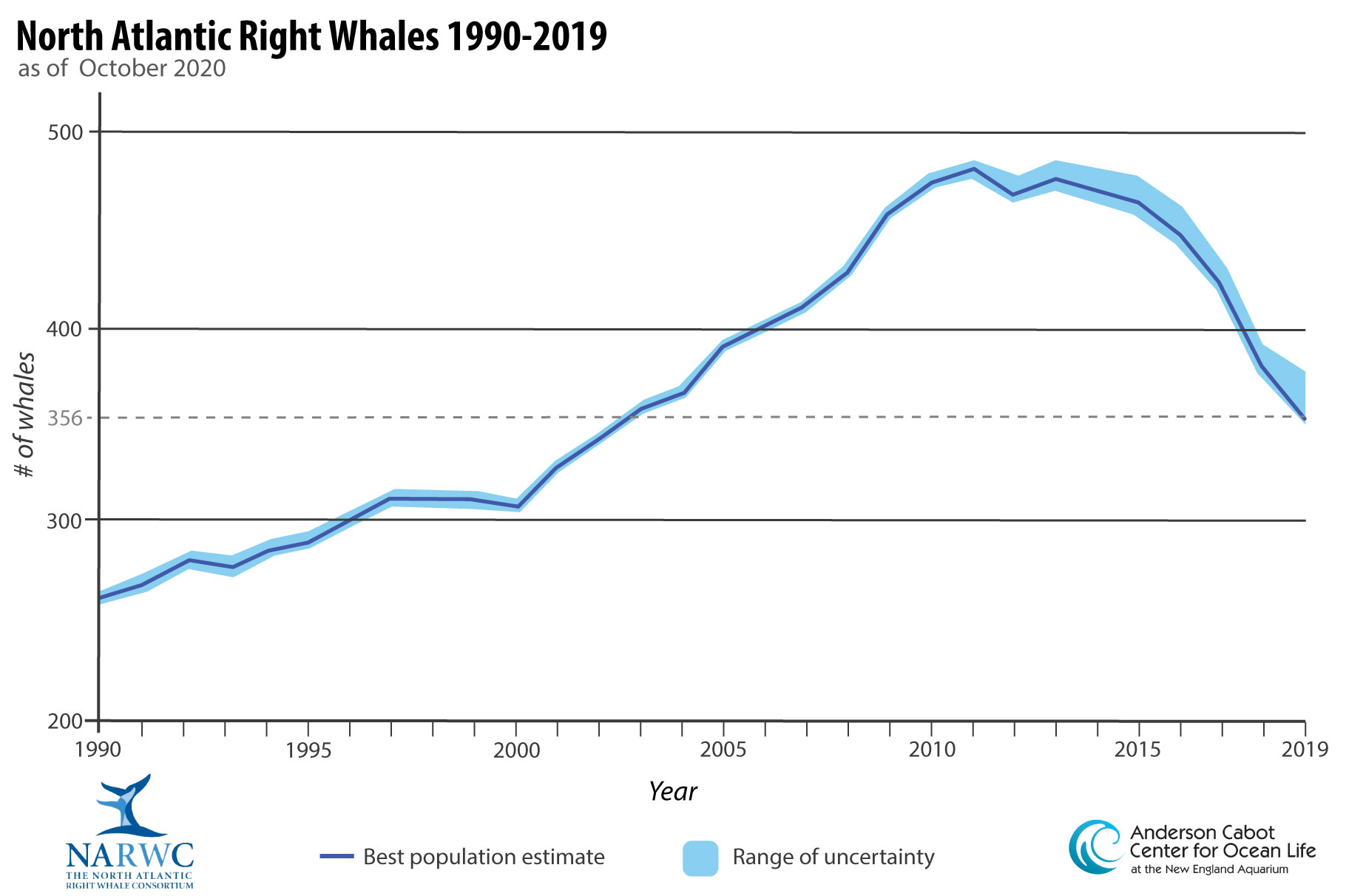
So far in 2020, scientists have observed only one right whale death, though the number is likely higher as COVID-19 restrictions impacted the length of field observing season for both U.S. and Canadian teams. From 2017 to 2020, there have been 31 documented right whale deaths.
“Given that the detected mortalities likely underrepresent actual mortalities by a significant amount, the state of this species is dire,” said Heather Pettis, a researcher at the New England Aquarium’s Anderson Cabot Center for Ocean Life and Executive Administrator for the NARWC.
During that same time period (2017-2020), only 22 right whale calves were born. Mortalities outpace births 3:2.
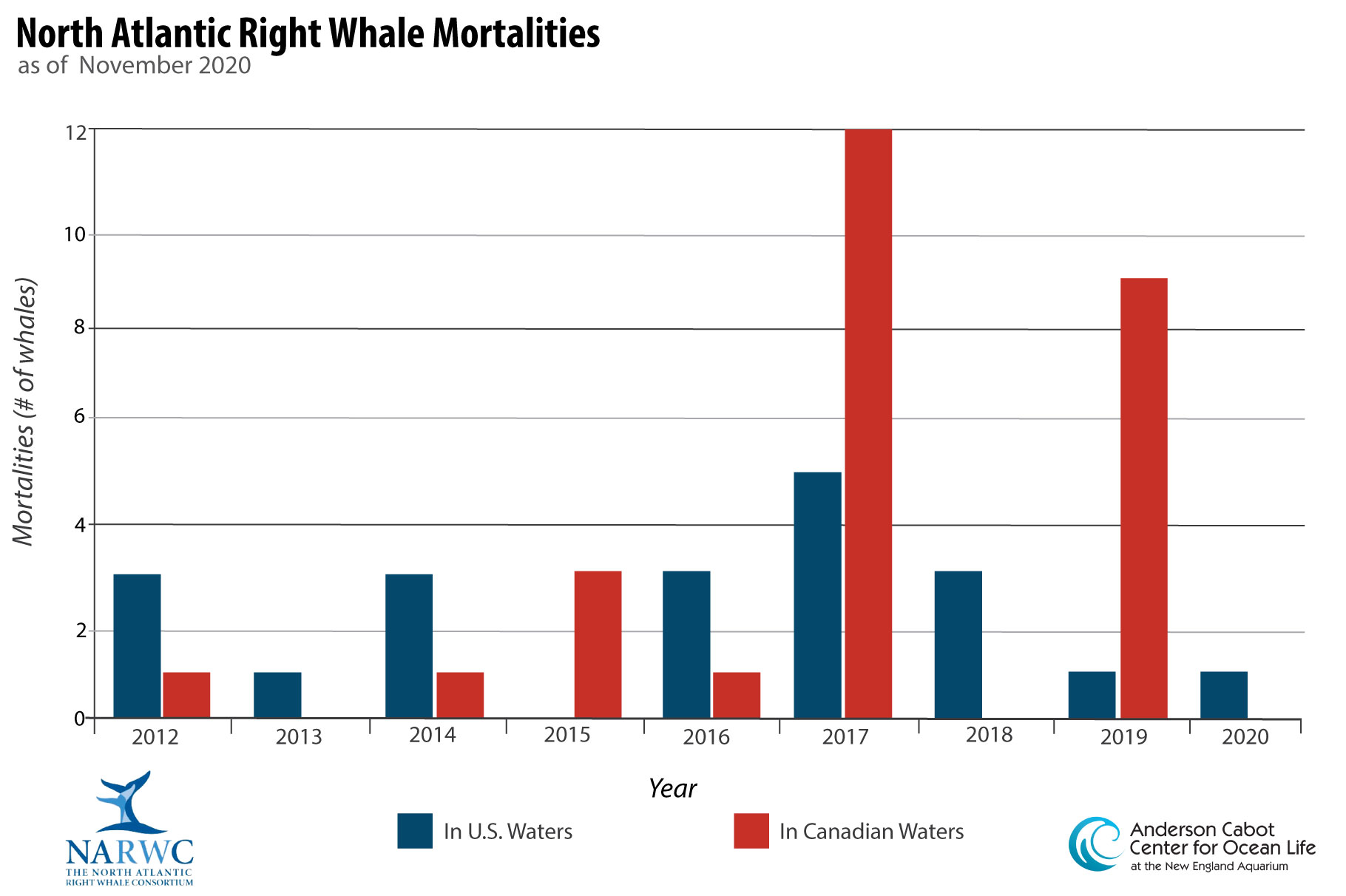
The single observed 2020 right whale death was the 2020 calf of Right Whale Catalog #3560. Just a few months old, the calf had evidence of at least two separate ship strikes, the last of which was likely the cause of death.
Human-caused factors, including ship strikes and entanglement in fishing gear, have been implicated in 18 of the 31 most recent deaths. The other 13 have an undetermined cause of death as most whales were either not retrieved or were too decomposed to perform a necropsy.
There were no confirmed entanglement mortalities in 2020, but five right whales documented carrying gear with four of the five entanglements considered to be life-threatening. Although all five were detected in U.S. waters, the origin of the gear is unknown. An entangled whale doesn’t die instantly. Instead, entanglements in fishing gear—mostly the heavy ropes and traps of snow crab and lobster gear—reduce the survival probability for whales by exhausting and slowly starving them. Many whales, sometimes with the help of disentanglement teams, manage to shed their gear, but the injuries they sustain can lead to poor health and reduced reproduction well after the initial interaction. A total of 86 percent of right whales have been entangled at least once.
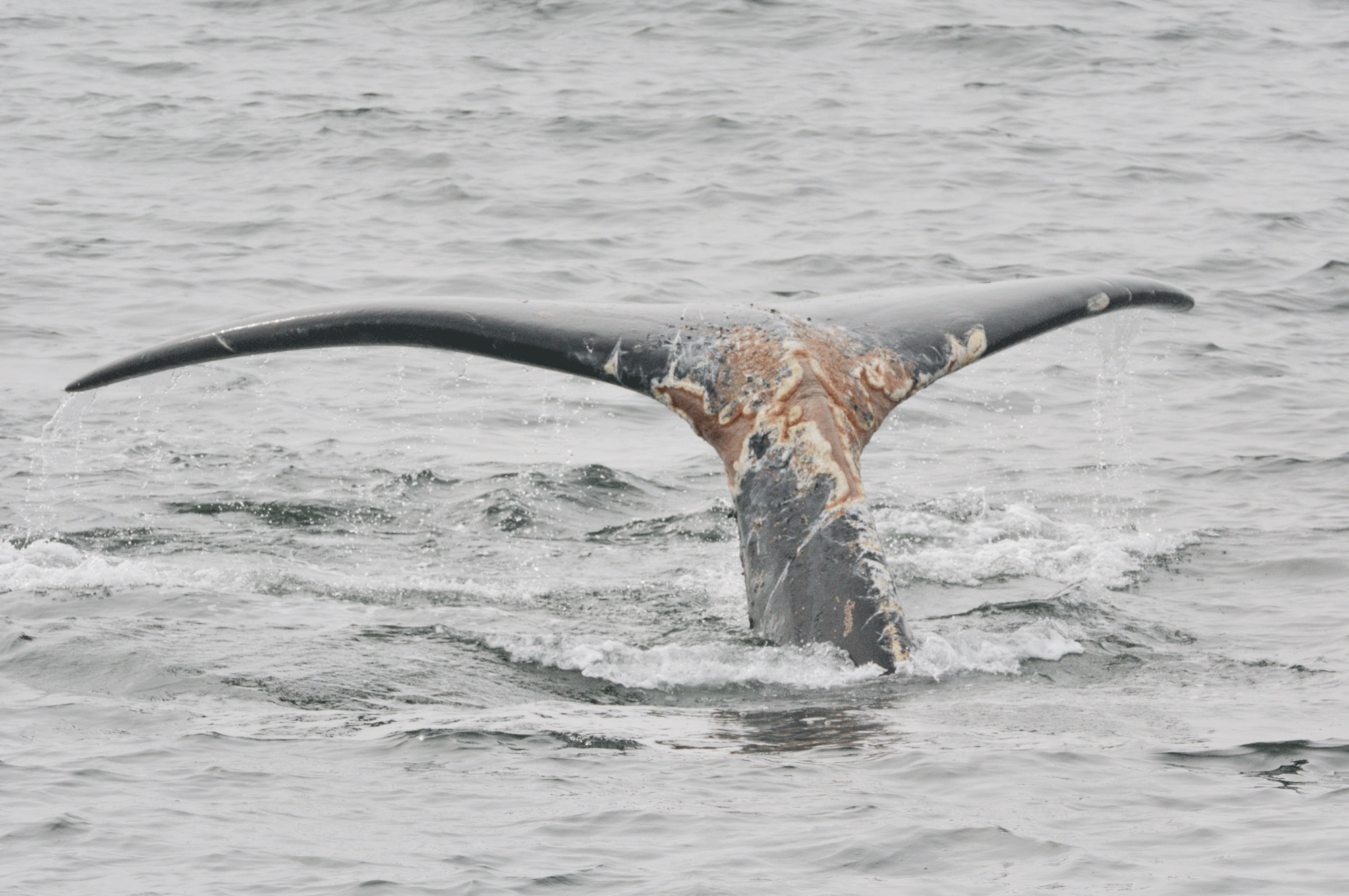
Right Whale Calves
There were 10 calves born in 2020, up from seven in 2019. Yet scientists estimate that only 13% of the 77 reproductively active female right whales gave birth. The report card defines “available” whales as females who have given birth to at least one previous calf, were presumed to be alive (seen in the last six years), and had not given birth in the last two years (right whales have a three-year calving cycle when healthy).
If only whales seen in the last three years are presumed to be alive, the number of previously reproductive females available to calve drops from 77 to 68 whales. This number could go up in the future if some of the 40+ female right whales, aged 10 to 15, which have not yet successfully calved, become first time mothers.
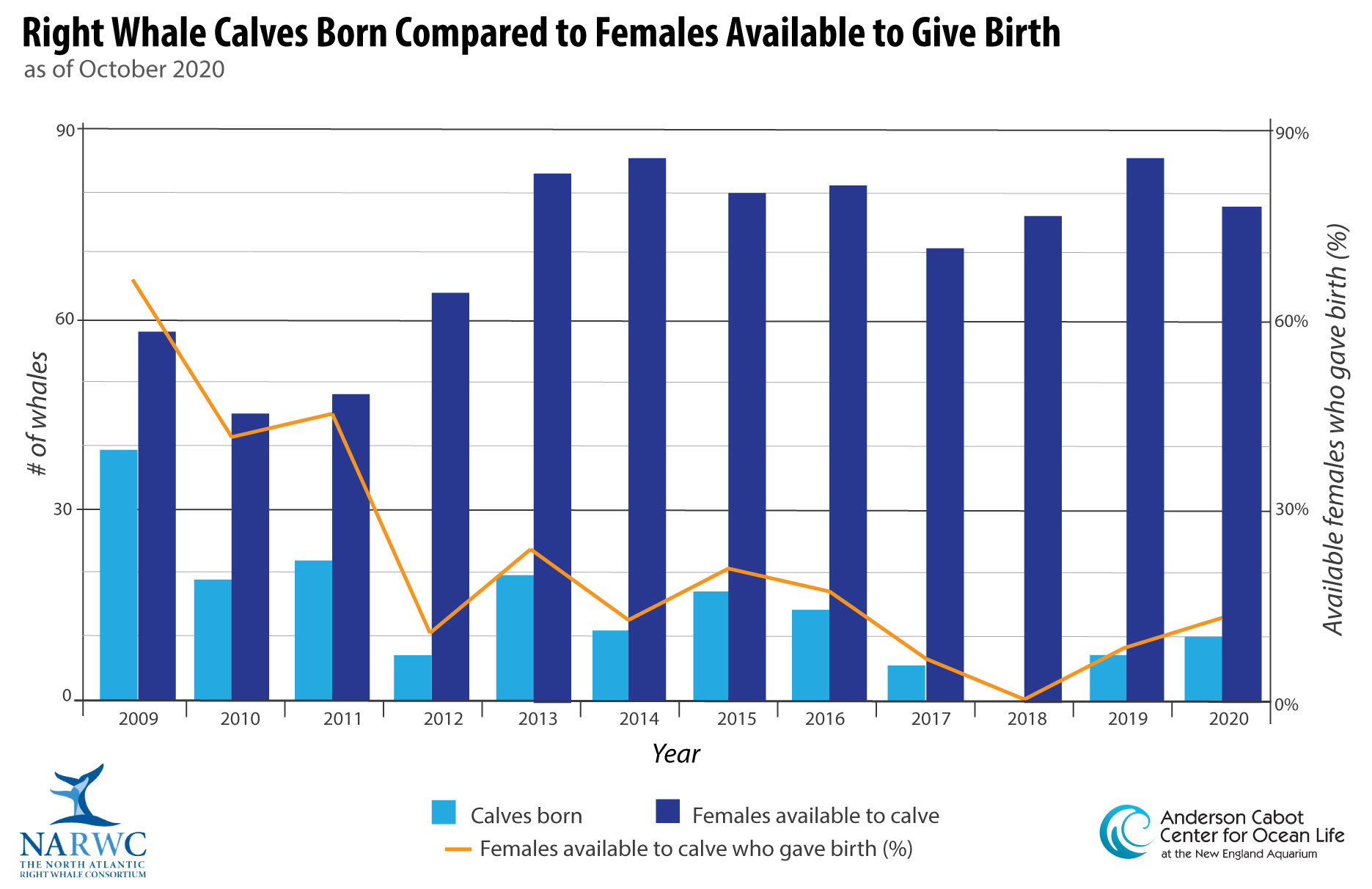
Right whale births are not keeping up with mortalities
Although this year’s ratio with 10 new calves and only one detected mortality seems promising, right whale mothers simply are not giving birth quick enough to combat the declining population. One potential reason is ongoing stress from previous entanglement, said Amy Knowlton, Anderson Cabot Center Senior Scientist. She has studied the effects of severe entanglement on the females in this species and found that within three years of a severe entanglement, only about 33 percent of females survive. Across the entire species, moderate and severe injuries from entanglements are on the rise.
What are we doing to help?
Since 2004, the Right Whale Consortium’s annual report has provided an assessment of where the situation stands for right whales, and, perhaps most importantly, recommendations for the future.
“Discussions about reducing anthropogenic impacts on right whales in both Canadian and U.S. waters are ongoing and encouraging,” said the report. “However, despite the 2020 reduction in overall mortalities and increase in births over 2019, a one year improvement does not a trend make and the population remains in decline.”
Anthropogenic injuries and mortalities remain a threat to the species and “immediate, broad-based mitigation strategies that result in significant risk reduction throughout the right whale’s range (both realized and potential) must be a priority if this species is to survive,” said the report.
Over the last several years, the distribution of right whales and their patterns of habitat use have been shifting, likely due to their prey shifting in response to climate change. Management changes as a result of these distribution shifts must be put forward if we hope to save the right whales from extinction.
The role of the Anderson Cabot Center
The Anderson Cabot Center is a critical component of the North Atlantic Right Whale Consortium, which is led by Heather Pettis of the New England Aquarium. For nearly 40 years, the Aquarium’s Right Whale Team has been leading research on and advocacy for the species. The team conducts vital work, including cataloging right whales in its extensive DIGITS database, tracking pregnancies and birth rates, investigating fishing gear adaptations to prevent entanglements, working to reroute shipping lanes to prevent deadly vessel strikes, and conducting groundbreaking stress hormone research in whales.
An important note: This is a preliminary release of the report card. Any additional data through the end of 2020 will be updated and a final 2020 Report Card will be released in January 2021.

